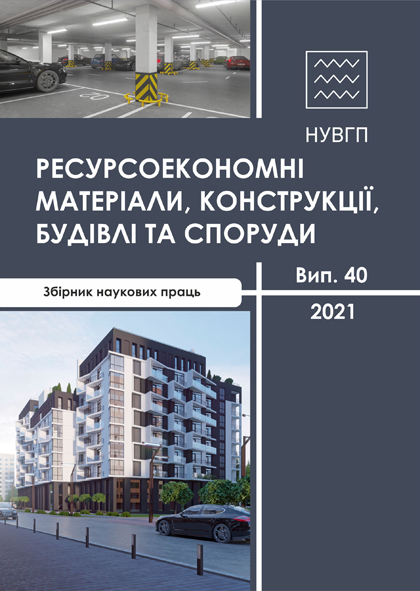TORSIONAL STIFFNESS OF REINFORCED CONCRETE ELEMENTS WITH NORMAL CRACKS, WHICH HAS AN INVERTED T-BEAM SECTION
DOI:
https://doi.org/10.31713/budres.v0i40.010Abstract
The paper presents a method for determining the torsional stiffness of reinforced concrete elements with the flange in the tension zone with the presence of normal cracks. The formation of these cracks leads to bending and torsional stiffness’schanges, which significantly influences the loads redistribution in statically indeterminate systems, examples of these include floors, bridge girders, crossbeam systems in framed foundations. It is shown that the change in bending stiffness’s as a result of cracks formation has been studied quite fully, and the effect of cracks on the changes in torsional stiffness’s on bar (axial) elements is less understood. It is shown that the overwhelming majority of studies related to torsion in reinforced concrete are dedicated to the investigation of spatial cracks. However, there is a large class of structures, the elements of which, only experience normal cracks, for which not only bending laods, but also significant torsional loads are present. Crossbeam systems also belong to this class of structures. The torsional stiffness of reinforced concrete elements with normal cracks has been studied for elements of various profiles. With respect to this the loading of T-elements with the flange in the tension zone has not been fully studied. Such sections are characteristic of the beams of frame foundations, in which the flange is located in the lower part. The main features to calculate such elements are presented, including that fact that the longitudinal reinforcement in the crack area is outside of the concrete compressed zone. Formulas for determining the torsional stiffness of all components in the section are provided. It is shown that the torsional load is taken by the pure torsion of the section’s compressed zone due to bending and the longitudinal reinforcement, as well as due to the shear of the same elements with respect to the shear center. Moreover, the shear of the compressed zone due to bending was taken into account not only in the horizontal, but also in the vertical direction, which differs from the earlier works published by the authors. A method for determining the torsional stiffness for any number of longitudinal reinforcement in the section is also provided.

